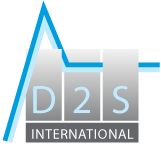SQUEAL
Squeal noise reduction in urban transport by rail treatment
Contract: BRPR-CT97-0477
Acronym: SQUEAL
Full title: Squeal Noise Reduction in Urban Transport by Rail Treatment
Project Co-ordinator: APT, Brussels (BE)
Starting date: December 1, 1997
Duration (in months): 36
Budget: € 1,682,942.00
EC contribution: € 841,470.00
Background
Most rapid transit systems have curved track sections where squeal noise is generated, predominantly in tight short radius curves. Curved track and thus the areas where squeal noise is prevalent, cover a minor fraction of the total track length. Individual curves are not longer than a few hundred meters. Therefore, the most cost effective way of solving the squeal noise problem is treating only those specific track sections, rather than treating the wheels. The aim of this project was therefore to find measures that can be applied to the rail in order to reduce the squeal noise.
Description of work
All the considered solutions are based on the assumption that squeal noise is due to the lateral stick-slip of the wheel, which causes the wheel to vibrate and act as a loudspeaker. Based on this assumption it was decided to first develop a software to calculate the squeal noise level as a function of all track and rolling stock parameters and than determine the efficiency for squeal noise reduction of the rail treatments:
-
Hard surfacing of the rail head to modify the friction-creep curve between the wheel and the rail;
-
Application of a constrained layer technique to laterally damp the rail;
-
Installation of laterally damping rail fasteners.
Results
It is not always the loudspeaker mode of the wheel that is responsible for squeal. Squeal also occurs at a series of axial bending resonance frequencies of the wheel surface and tread.
The theoretical model of a lateral stick-slip between the wheel and the rail cannot explain all squeal occurrences: there is also the longitudinal slip leading to torsion of the wheel axle.
The constrained layer technique is not suited for damping the rail.
No type of rail hard surfacing was found satisfactory simultaneously in terms of squeal noise reduction, security and manufacturing automation.
The laterally damped rail fasteners behaved totally as planned. In combination with resilient wheels (tramways) they produced a significant reduction of the squeal noise. However, in combination with solid steel wheels (metro) there was no reduction of the squeal noise.
The rail is damped, but the wheel is still excited.
Only solutions that eliminate lateral and longitudinal slip simultaneously are effective.
